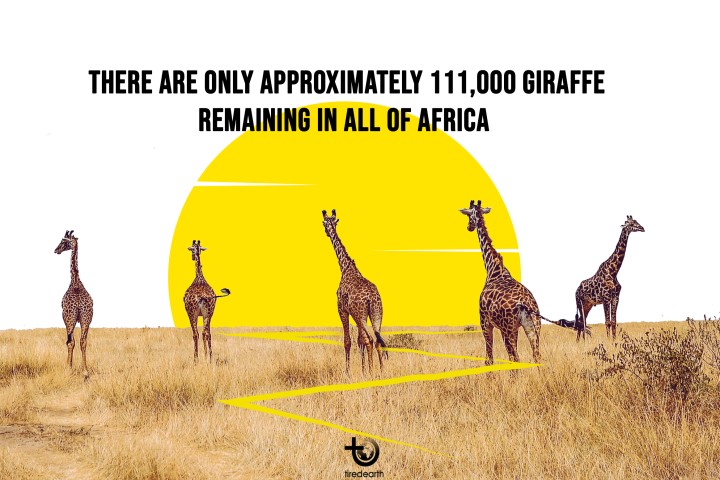Threats to giraffes
The number of giraffes in the world is declining as their habitats shrink. In the late 19th and 20th centuries herds of 20 to 30 animals were recorded, now on average herd sizes contain fewer than six individuals. The IUCN lists four main threats to this species: illegal hunting , habitat loss, civil unrest, and ecological changes. As human populations grow and increase agricultural activities, expand settlements, and construct roads, the giraffe is losing its beloved acacia trees, which are its main source of food. Many giraffes are slaughtered just for their tails, which are considered a status symbol and have been used as a dowry.
Africa's population is increasing
Over the next thirty years, Africa's population is expected to increase rapidly. And more people, means more habitat loss and fragmentation for giraffes which it will cause so much troubles for them. "More than half of global population growth between now and 2050 is expected to occur in Africa," according to a 2015 United Nations report. "Of the additional 2.4 billion people projected to be added to the global population between 2015 and 2050, 1.3 billion will be added in Africa."
How to protect giraffes
Here is six different ways we could do to help these lovely animals.
- Support sustainable agriculture and settlement practices near giraffe habitats
- Reforest key areas with acacia trees that provide giraffes’ main food source
- Reverse climate change that’s causing rising temperatures and widespread drought in Africa
- Stop the poaching of giraffes for their tails, considered status symbols
- Solve hunger in areas like Sudan where impoverished villagers eat giraffe meat
- Educate all people on how and why to protect giraffes


